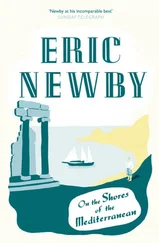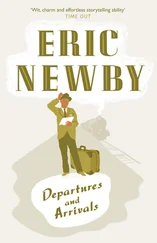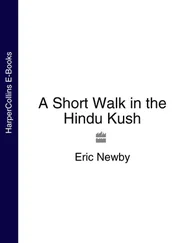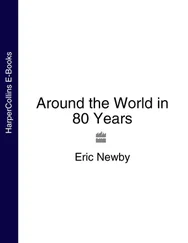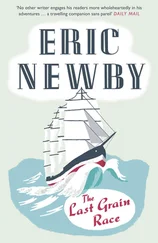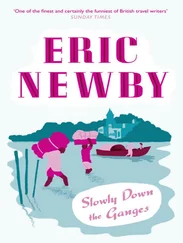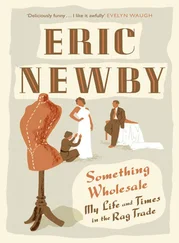CHAPTER TWO The Baby as a Traveller
At the time I was born, and for long afterwards, ‘middle-middleclass babies’, of whom I was one, rarely travelled in motor cars, ‘middle-middle-class motors’ being mostly open ones, and sometimes difficult to close if a change of weather demanded it. When I went on holiday the year after I was born, and the year after that – and photographs assure me that I did – it was by train from Victoria, Waterloo, or Liverpool Street with lots of trunks and my vast £25 ($97.50) pram with its fringed awnings and a sort of shotgun holster for parasols or umbrellas, according to what was going on overhead, which needed a couple of porters to lift it into the guard’s van, which meant lots of lovely tipping. In those years I went to nice, unadventurous places such as Frinton, Bembridge, Broadstairs, or Cliftonville which was ideal for babies because there nature had been almost completely eradicated. I cannot remember the lot, for I spent a week here, a week there, presumably as the spirit moved me.
Down on the beach at one or other of these or similar resorts, surrounded by babies of similar age and condition ( The Times recorded some nineteen babies as having been born on the same day I was), I used to pass the cooler days at some of them against a background of cliffs and the only recently outmoded, horse-drawn bathing machines which, horseless, rather like the electric brougham but without the electricity, still performed the function for which they had been built but were now parked permanently above high-water mark. If the temperature rose above 55° Fahrenheit, an admittedly rare occurrence at the seaside (which is also the correct temperature for serving draught beer in Britain), we would all insist on being taken indoors and placed in our bassinets, still swathed in voile, not as a protection against treacherous currents of air but, on the same principle as Bedouins swathe themselves in wraps, against the intense heat.
The truth is that babies do not like travel, and I was no exception. Babies are unadventurous. Babies act as grapnels to prevent ‘the family’ dragging its ground. That is why they were invented. Perversely, their desire for fresh horizons comes much later when they have already begun to ‘attract’ fares, and can no longer travel free; by which time they are no longer babies at all.
The prospect of the Great Glen, the Grand Canyon, the wastes of the Sahara at sunset, the entrancing, set-piece landscapes of Tuscany, all leave them equally indifferent, and usually breaking out in a rash which takes weeks to clear up. Useless to consult the baby about where it would be prepared to go without these alarming side effects because it will never express an opinion until it arrives at its destination, when it is invariably adverse.
Thus did I spend my first two years of travel. It is a wonder, and a credit to my parents’ resilience, that I did not succeed in driving them permanently round the bend.
What can one truly remember of one’s infant life when one comes to write about it years later, putting as it were one’s hand on one’s heart, separating in the mind’s eye what one can really remember from what one has been told, separating fact from fiction, or what is more factual from what is more fictional on those frontiers where these nuances become blurred and indistinct?
In the case of my own childhood this mélange of what I could really remember and what I thought I could remember was the result of looking over a long period of years at hundreds of photographs made with a 3A Eastman Kodak. Some of them were taken in what even today would be regarded as technically difficult circumstances, such as foreground figures photographed against shimmering summer seas, long before exposure meters came into use. In many of them I was either the principal figure or, if it was a landscape, was somehow or other included as an extra.
Thus I appear, embalmed as it were, in volume after volume of now fragile cloth- and morocco-bound albums, most of them with the relevant dates and places written neatly above them in ink: in the pram at Frinton, Whitsun 1920; on the sands below the white cliffs at Broadstairs, facing the English Channel, in front of a striped bathing tent with my father’s white buckskin shoes parked outside it – he may have gone for a dip – ensconced on a cushion on a deck-chair like an infant Dalai Lama, August 1920; barely able to stand, supported by my mother like a drunken man, wearing a white woolly suit and defiantly waving a rattle, behind the privet hedge in the front garden of Three, Ther Mansions, on a bleak day in March 1921; apparently alone at Bembridge, Isle of Wight, apart from a girl in a gym smock who is ‘bothering me’, September 1921; wearing a floppy white sun hat and rubber waders, digging away on the beach at Bournemouth with a wooden spade and, without the waders, riding on a donkey outside a subscription library on the front, Whitsun 1922; on the Isle of Wight again, this time in the side-car of a motor-cycle combination with my mother at the helm; on the rocks and in the bracken on Sark, July 1923.
How few other holiday-makers there were on the beaches, even in high summer in these years immediately after the war, is shown in those early photographs. At that time only the well-off went to the sea for a fortnight or a month. The great majority, that is of those who went away at all, went on day excursions as ‘trippers’.
According to these photographs everywhere we went we must have picnicked. In every picture of a picnic a large wicker basket that would have needed two people to carry it, loaded with mounds of food, and batteries of Thermos flasks in their own special wicker containers, stand between us and whoever is taking the photograph.
One of these picnic photographs, taken in September 1921, shows my mother and I in a lane in Surrey, not far from the London to Portsmouth Road. It is a sunless, autumnal day, mist is beginning to rise from the fields beyond the hedgerow gate where our picnic has been set out, and by the roadside stands our splendid, shiny, open Napier motor car, the sort of motor car which Mr Toad would have planned to make off with if he had ever set eyes on it.
Although I remember the Isle of Wight as the place where I first sat in the side-car of a motor cycle, at Easter 1923, much more I remember it as being the Place Where God Lived, although this was later, some time in the summer or autumn of 1925. It must have been during one of those interpolated holidays my mother was so adept at arranging at an instant’s notice if my father had to go abroad without her, on the grounds that a change of air would do me good. He often used to go to Holland to sell enormous coats and costumes to the Dutch. With her she took her sister, my Auntie May, who loved travel, however banal.
On one occasion we made an excursion to a place near the middle of the island and some time in the afternoon of what I remember as a very hot day we arrived at our destination, a village of thatched houses that were clustered about the foot of a green hill, on the summit of which stood what seemed a very small church. 1 From where we stood it was silhouetted against the now declining sun, the rays of which shone through its windows, producing an unearthly effect.
There was no time to climb the hill to the church and have tea as well. If there had been, I am sure that my mother and my aunt, both of whom were interested in ‘old things’, would have done so. Instead, we had the tea, in the garden of one of the cottages, and while we were having it I heard my mother and my aunt talking about the place and how nice it was, which they called Godshill.
I was very excited. Godshill. If this was Godshill then God must live on it. God to me at this time and for long years to come was a very old, but very fit, version of Jesus and much less meek-looking. He had a long white beard, was dressed in a white sheet and was all shiny, as if he was on fire. He also had a seat in the front row of the dress circle, as it were, so that he could see immediately if one was doing wrong. This was the God to whom I prayed each night, either with my mother’s help or with whoever was looking after me.
Читать дальше

